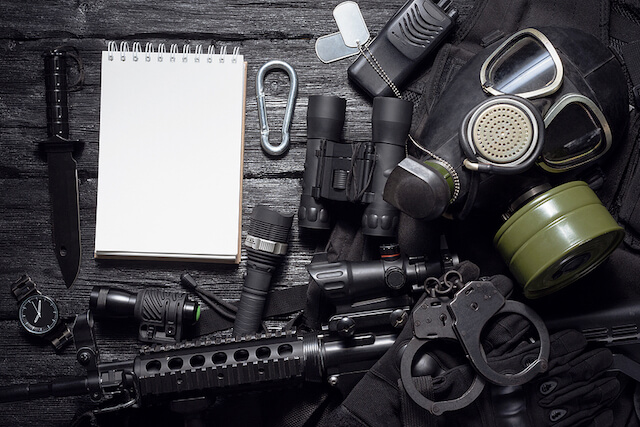4 Government And Military Challenges Solved By RFID

RFID technology has grown in popularity and usage across most, if not all sectors. We’ve seen aerospace RFID present in the aerospace and aviation industry to help keep track of the number of aeroplane parts and their condition by specifically using the RFID tool tracking system. And we’ve also seen it being applied to retail businesses for better customer service and efficient inventory.
Similarly, the demand for RFID also includes the military and government sector.
As an agency or organisation which is a part of the government and military, it is necessary to have visibility capability, accurate assets reporting, and accurate identification of its personnel and inventory. Moreover, such operations have to be managed across numerous locations nationwide (and worldwide for the military) for defending the citizens during emergencies.
As such, the advent of military RFID was implemented in both government and military sector to eliminate these challenges and ease operations for staff. Here’s how RFID helps improve efficiency in these two sectors and cut down on unnecessary costs.
Access control
One major factor in the military is protocol and rank. Certain facilities and areas within a military base are restricted only to a few high-ranking officials, due to the high level of security implemented in such government facilities.
Henceforth, the respective RFID badges are only given to authorised personnel and visitors who are allowed to access specific zones within the facility. Especially when there are different access levels involved, the use of RFID badges will help to identify who is allowed access and to which facility. In addition, the badges are connected to a database and all access activity is recorded with a detailed list of reports.
Management of equipment
Military agencies have numerous valuables in terms of machinery, documents and their hardware arsenal. All of these items need tracking to record their exact location. This is to help prevent misplacement or any loss of equipment or material within the facility.
For example, the number of pellets remaining in a gun or the availability and condition of voter equipment before the start of an election are all equally important; which is why RFID is necessary as human errors may potentially occur. RFID tags and readers can help in tracking, locating, maintaining assets automatically without the need for staff involvement, and as such, eliminates the possibilities of human errors.
Management of personnel
The ability to track the location of all employees within a military facility is critical. For instance, soldiers move around different territories and battlefields. In certain cases, it would be mandatory to carry out headcounts of all soldiers to ensure that everyone is accounted and safe. Therefore, knowing the exact location of soldiers in real-time is integral to protocol.
It is equally important to identify those that are wounded in hospitals, in case a war occurred and some were taken to health facilities. In addition, tracking casualties is equally possible, and easier when using RFID.
Management of inventory
Inventory is not only a factor to consider in logistics or retail only, but also in the military sector. Military agencies depend on different supplies to operate efficiently on a daily basis. Therefore, it is imperative to be informed when the items get depleted so that they can order more from suppliers.
As the supply chain in the military is crucial, inventory moving into the facility needs to be managed effectively and efficiently. The need to locate items immediately and seamlessly is important in a sector such as the military that depends on speed and efficiency. Any shortage of supplies within such an area can affect the flow of operations.
With technology like RFID inventory management systems, it ensures better protection over assets, increases the productivity in operations, and helps to reduce cost significantly through inventory loss prevention.